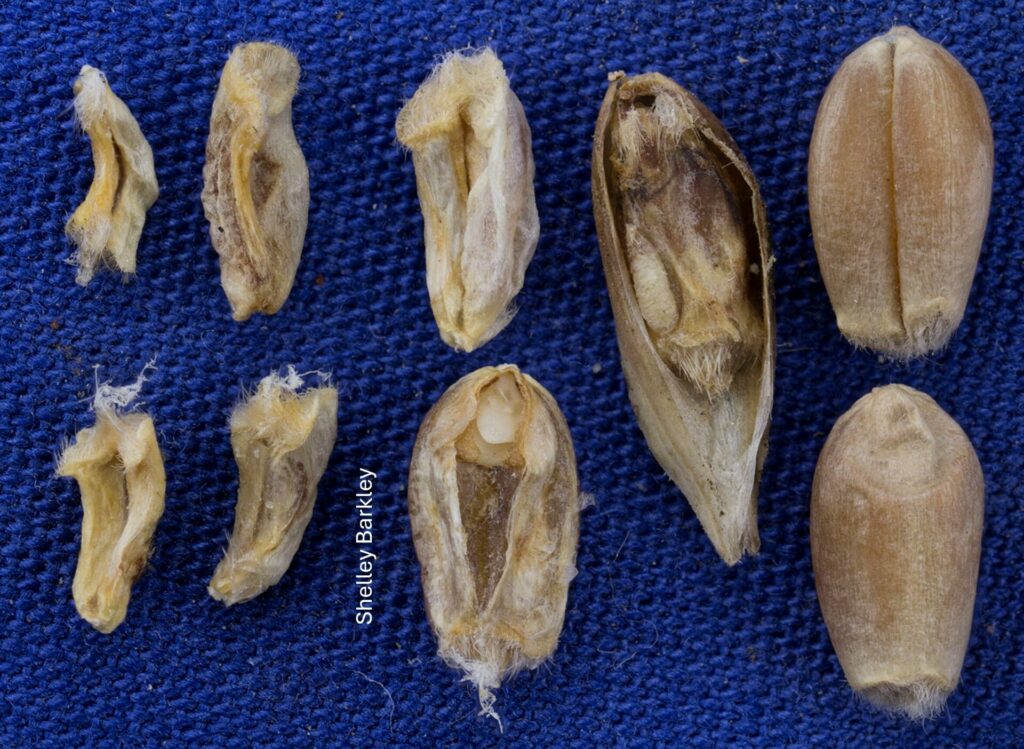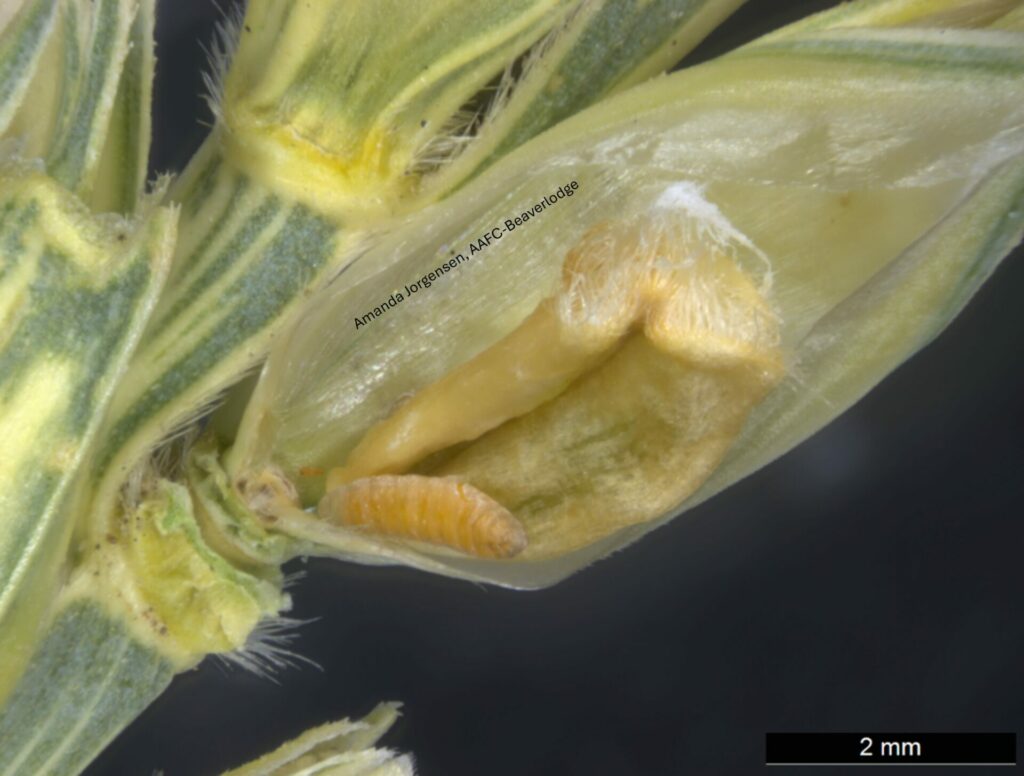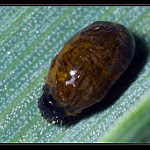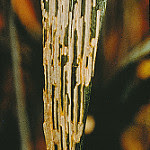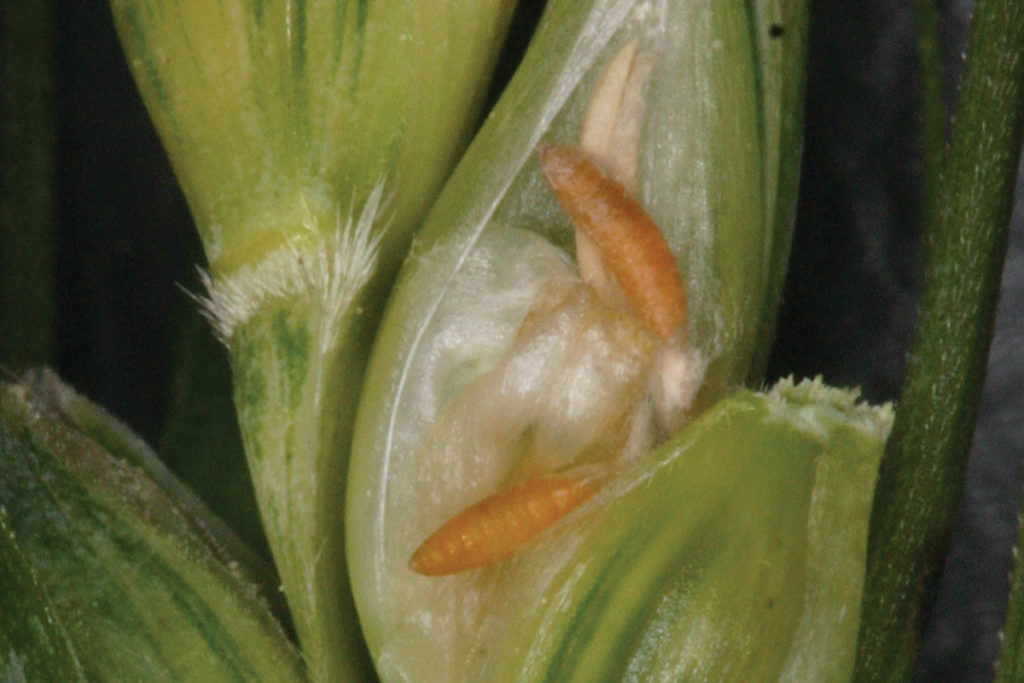Although the PPMN is unable to model and predict wheat midge development as in previous years, accumulated precipitation levels during May and June provide guidance in terms of in-field scouting. Access the Provincial Insect Pest Report for Wk09 for updates for this economic insect pest.
Important – the accumulated precipitation levels over past 60 days (May 5 to July 3, 2024) were mapped in Figure 1 and ranged from 60 to >250 mm across the prairies, well beyond the 45 mm threshold that facilitates larvae to exit their cocoons to pupate in the soil then emerge. Areas in Figure 1 receiving substantial rainfall this spring need to plan to scout for wheat midge now as adults typically emerge and seek wheat in early July.

Remember – the rate of development and timing of adult midge emergence varies at the field level and can only be verified through in-field scouting. Midge flight coinciding with the beginning of anthesis is a crucial point when in-field counts of wheat midge on plants are carefully compared to the economic thresholds.
Producers opting to grow cultivars susceptible to wheat midge need to be mindful that any historically elevated density of wheat midge occurring over the past one or even possibly six years across the prairies that also has received substantial rainfall since May of 2024, warrants in-field monitoring now. Review the past wheat midge maps here in relation to your fields THEN compare the historical densities to areas of high precipitation in Figure 1.
In-Field Monitoring: When scouting wheat fields, pay attention to the synchrony between flying midge and anthesis. In-field monitoring for wheat midge should be carried out in the evening (preferably after 8:30 pm or later) when the female midges are most active. On warm (at least 15 ºC), calm evenings, the midge can be observed in the field, laying their eggs on the wheat heads (Fig. 3). Midge populations can be estimated by counting the number of adults present on 4 or 5 wheat heads. Inspect the field daily in at least 3 or 4 locations during the evening.
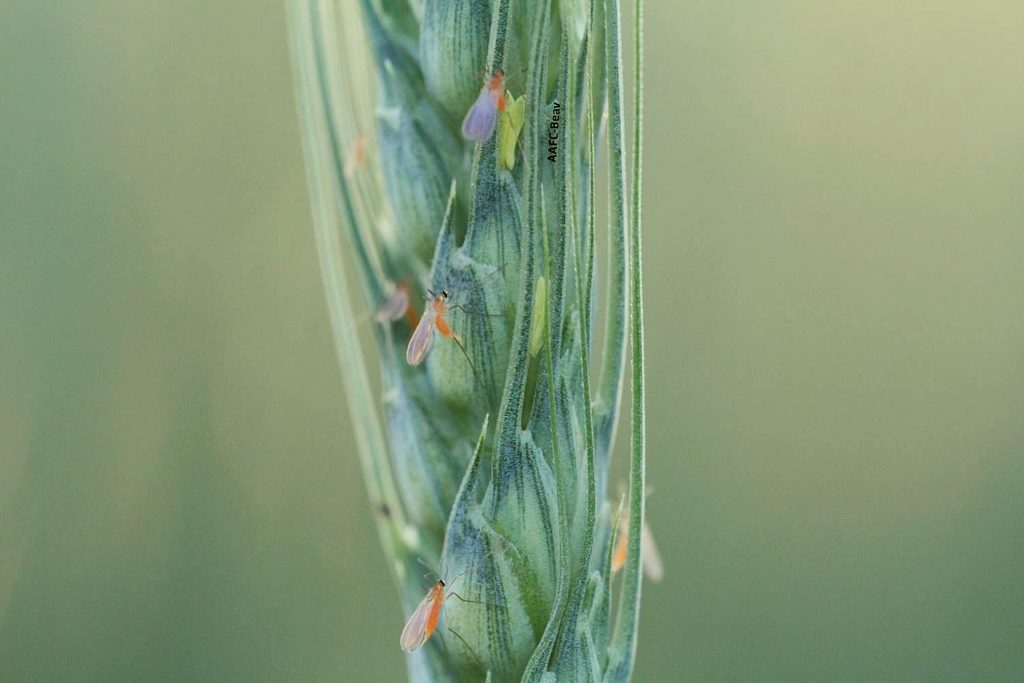
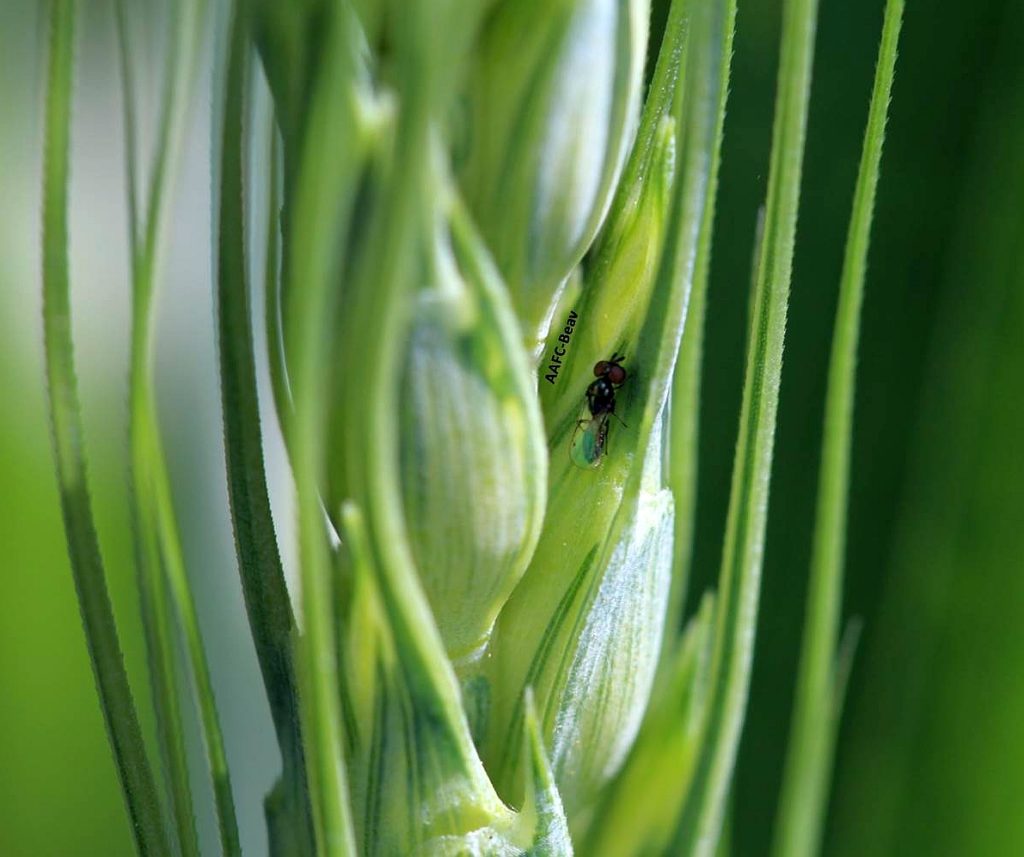
REMEMBER that in-field counts of wheat midge per head remain the basis of the economic threshold decision. Also remember that the parasitoid, Macroglenes penetrans (Fig. 4), is actively searching for wheat midge at the same time. Preserve this parasitoid whenever possible and remember insecticide control options for wheat midge also kill these beneficial insects who help reduce midge populations.
Economic Thresholds for Wheat Midge:
a) To maintain optimum No. 1 grade: 1 adult midge per 8 to 10 wheat heads during the susceptible stage.
b) To maintain yield only: 1 adult midge per 4 to 5 heads. At this level of infestation, wheat yields will be reduced by approximately 15% if the midge is not controlled.
Inspect the developing kernels for the presence of larvae and larval damage.
Albertans… please refer to this week’s Provincial Insect Pest Report Links to link to count reports of wheat midge for 2024.
Wheat midge was featured as the Insect of the Week in 2023 (for Wk08). Be sure to also review wheat midge and its doppelganger, the lauxanid fly, featured as the Insect of the Week in 2019 (for Wk11) – find descriptions and photos to help with in-field scouting! Additionally, the differences between midges and parasitoid wasps were featured as the Insect of the Week in 2019 (for Wk12). Remember – not all flying insects are mosquitoes nor are they pests! Many are important parasitoid wasps that regulate insect pest species in our field crops OR pollinators that perform valuable ecosystem services!
Information related to wheat midge biology and monitoring can be accessed by linking to your provincial fact sheet (Saskatchewan Ministry of Agriculture or Alberta Agriculture & Irrigation). Alberta Agriculture & Irrigation has a YouTube video describing in-field monitoring for wheat midge.
Additional information can be accessed by reviewing the Wheat midge pages extracted from the “Field Crop and Forage Pests and their Natural Enemies in Western Canada: Identification and Field Guide” (2018) accessible as a free downloadable PDF in either English or French on our new Field Guides page.

